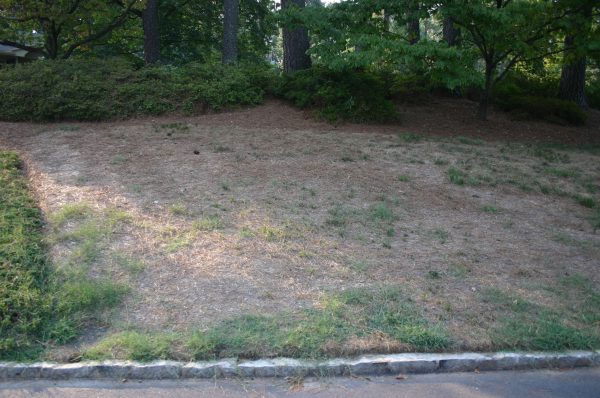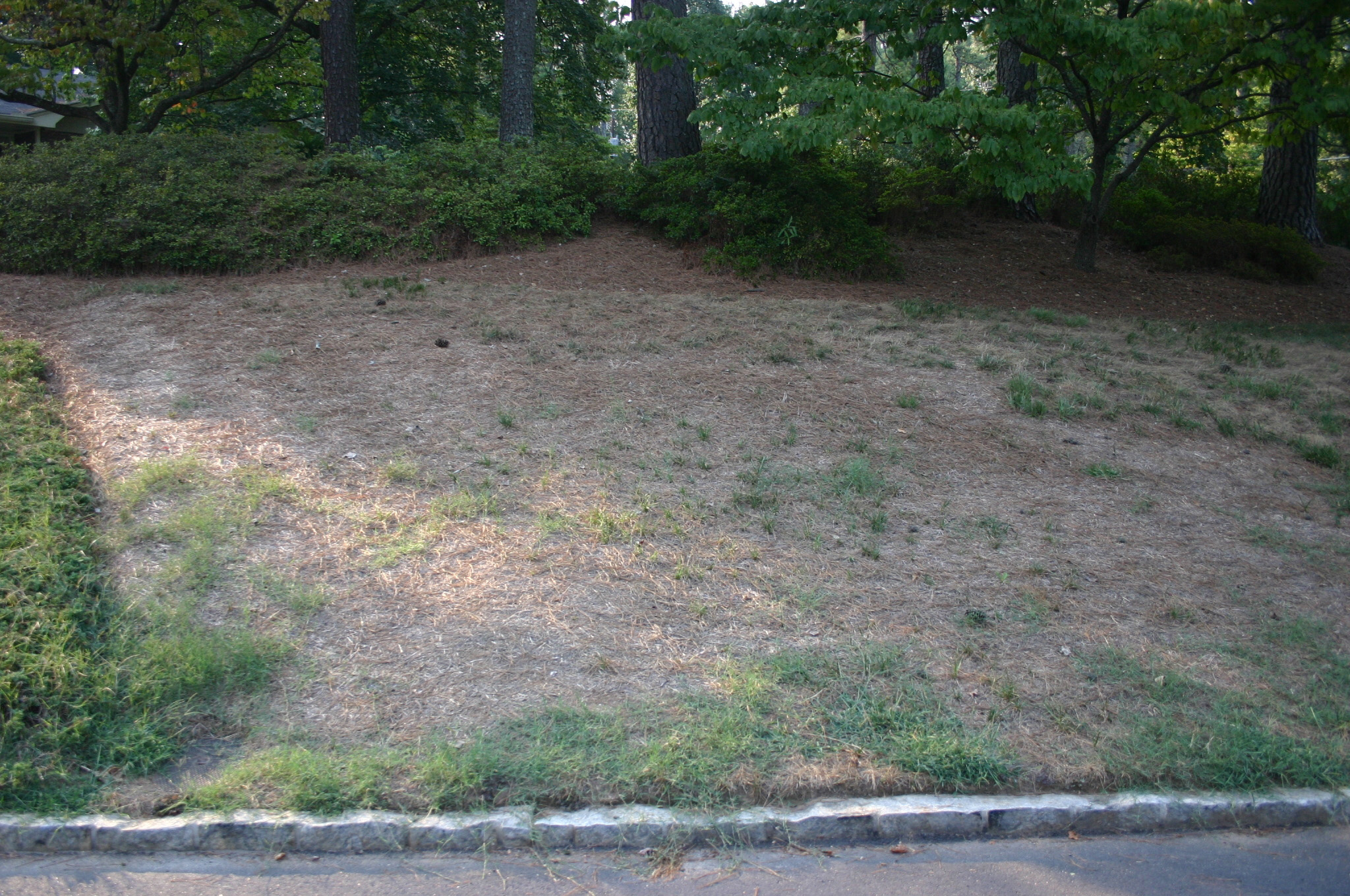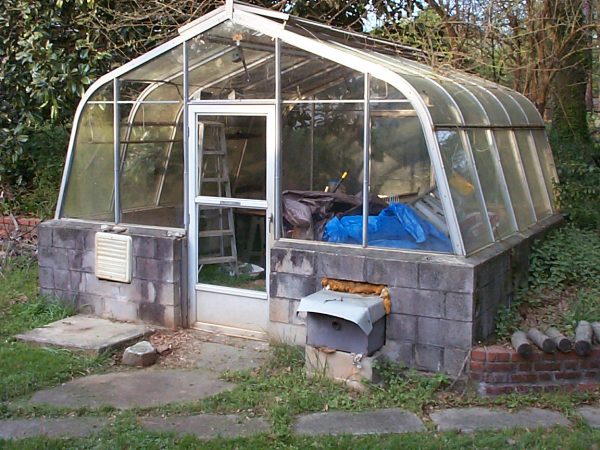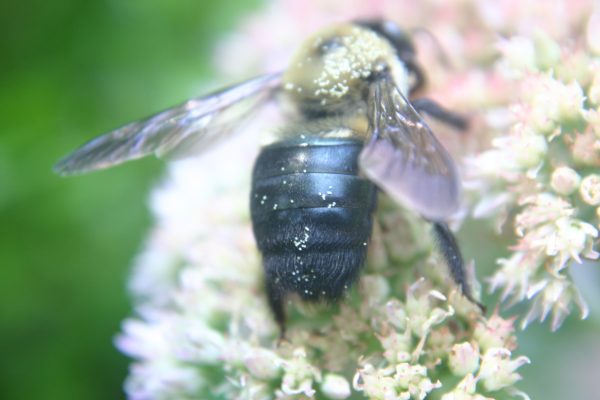Fescue – How to Have a Losing Lawn

Anyone can predict the winners. It takes a real pro, though, to predict the losers of football games.
Based in Athens, Leonard Postosties once broadcast his pigskin prognostications, called “Leonard’s Losers”, each week. Listening to Leonard a few years ago, when he correctly picked Clemson to fall to Georgia, I came to a startling realization. I have seen so many awful fescue lawns in my career I can usually predict how they will fare just by looking at their initial state.
A case in point is the roadside sewer repair that was done a few miles from my house. After a pipe was replaced in April the workmen literally blanketed the damp clay with fescue seed. The seed germinated speedily and generated a spectacularly green swath until mid-June. Then, in ten days as I regularly drove past, I saw the grass turn yellow and die. “I knew that would happen!” I muttered when I saw it.
The reason? Pythium blight, a common disease when seedlings grow too close together. Now the entire patch is eroded and weed-infested. The loser? The homeowner.
It is easy to have a losing fescue lawn. Too easy, in fact. To prove my point, try any of the five techniques below this fall and I can guarantee your lawn will be a loser next year.
PLANT ON HARD SOIL The real reason so many fescue lawns look so bad this time of year is that the plants have no root system. Fescue is a cool-season grass. When temperatures are above ninety degrees, fescue can’t efficiently photosynthesize. Without photosynthesis there is no energy to extend roots through hard soil. Having insufficient roots causes the ratty fescue lawns I see throughout Atlanta.
It is possible to have a good-looking fescue lawn even in the heat of summer. All you have to do is mix plenty of organic matter in the soil before you plant. Alternatively, plan to aerate the lawn before you plant and to re-aerate next spring in early June. A good aeration means ten holes, two to three inches deep, per square foot. The lawn will be the loser otherwise!
USE TOO MANY SEED It is very tempting to plant more seed than lawn experts recommend. I’d estimate that the sewer crew I described above used a twenty-five pound bag of seed in a thousand square foot area. The recommended rate is five to ten pounds. If you want to be an expert on pythium fungus, use higher seeding rates. You’ll have an excellent educational experience by next summer!
FAIL TO HAVE GOOD SEED-SOIL CONTACT Once you scatter seed, it must contact the soil closely as it germinates. Otherwise the seed root will extend, search for soil to grow in and, finding none, die. If you aerate before seeding, the best way to insure good seed-soil contact is to drag an old piece of carpet behind you across the lawn. The carpet will break up the aerator cores and will shake the seed down to the soil surface. A rented water-filled roller also does an excellent job mashing the seed into the soil.
USE OLD SEED The Georgia Seed Law states that no person shall sell seed that has not been tested for germination within the past nine months. Nonetheless, I commonly find lawn seed at garden centers that hasn’t been tested for a year. Old seed means poor germination. There is no sense buying it when newly tested seed is available at the same nursery for the same price.
DON’T WATER PROPERLY After planting, seed must be kept moist but not soggy. One schedule for watering new seed is as follows:
•One inch of water immediately after planting
•Followed by one-eighth inch of water every other day for two weeks
•Followed by one and one-fourth inches of water each week, divided among three applications per week,
•Followed by one inch of water once per week (or as needed) during the growing season.
I’ve had experience losing. If memory serves, my high school basketball team went 2-18 one season. If I had grown up practicing my shooting skills rather than chasing chickens we might not have lost so many games. If you avoid the pitfalls I’ve listed above, you and your fescue lawn will make a winning combination next year.

dead fescue















